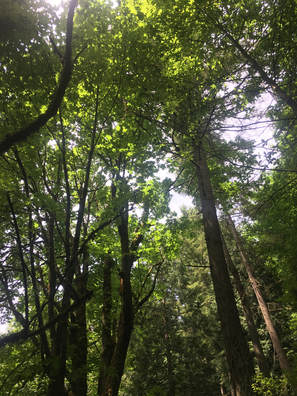 It’s Wednesday morning at 10am and campers begin to arrive with their families. Parents look around a little nervous with lots of questions. Students look around and at each other, also a little nervous but with no questions. They are standing in a patch of bare land, with invasive blackberry starting to creep in and the loud sound of cars on I-405 filling their ears. Once the parents leave and everyone is accounted for, we head into the forest and up to the well trail. Pushing through restoration sites, past a few healthy salmonberries, a soft thimbleberry, and finally under a low hanging big leaf maple branch; we enter into another world. Almost like a cathedral, the canopy is high and full of light filtering through various shades of green leaves. The sword ferns spread out across the ground, providing cover for little creatures in the forest. We make our way up the trail and keep an eye out for stinging nettle. Once we make it to the old well, we circle up with Devil’s club and begin our introductions. This is the first scene of our pilot summer camp at North Creek Forest. It was a week full of hiking, games, science, and fun. Together with our two new interns and a volunteer from our education committee, 12 middle schoolers spent a fun three days learning about our forest family. After some team building games and the compilation of a community agreement, we began the week introducing the students to their plant relatives. Each camper became an expert of a particular plant and taught each other about the habitat, life cycle, and relationships within the ecosystem. We did a little journaling, with campers focusing on the details of their plant. The assignment was to draw a sketch of the plant and label the different parts. Before we knew it, the day was over and parents were beginning to arrive. We had a quick debrief about the day and we hoped the campers would return the next day. 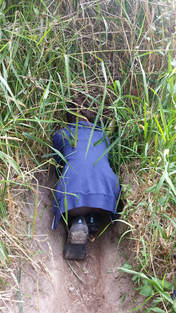 And they did! This time, we met at our office at UW Bothell. We stopped in the food garden and did some stretching and breathing. On our way down to the North Creek Wetlands, we stopped and looked out over the forest and wetlands contemplating the beauty of the watershed. Campers were asked to count how many shades of green they saw as we began our day learning about the lowland forest ecosystem. We broke up into plant family groups based on each camper’s plant from the previous day. After a quick introduction to the arcGIS collector app and a habitat features data sheet in their journals, we headed out on the trail through the wetlands. Along the way, campers worked together to locate their plants and mark them on the map. They also made notes of the habitat features within each location to better understand the needs and relationships of their plants. We saw many cool things along the way, like a beaver slide and sedge filled trails. By the time we made it to the forest, we were tired and hungry. After lunch, we made our way up the trail and played a hearty game of Marco Polo, making and mapping a new trail along the way. Again, time flew by and it was time to go again. We waited for parents while devouring cold watermelon and conversation flowed much more freely as we began to bond as a team. 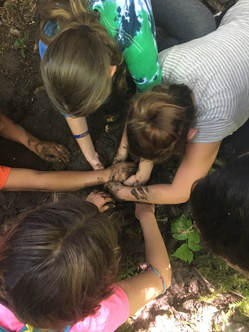 The final day was centered around humans in the ecosystem. How can we hurt or help our plant relatives? Campers learned about invasive species and how urban development impacts the forest’s ability to recover from damage or degradation. We spent the morning removing invasive blackberry from our gathering site and pulling trash from a rubble pile. Campers found some really interesting unidentifiable pieces of machinery and they proceeded to create some great stories to explain the history mystery. After lunch, we went into the forest near the stream and campers built ecosystems made from dirt and any materials they found nearby. Each group was asked to explain how their ecosystem would support each of their plant relatives. The kids had a blast playing in the dirt and working together to solve problems like large rock extraction. When they were finished, we damaged or destroyed part of their models with different real world problems, asking them what actions they might take to help the habitat recover. Each group came up with some really complex problem solving solutions. During our closing circle, I was a little emotional. The future generations of this world will be dealing with many issues and I am confident they will adapt with love and care of our precious plant relatives. Are you excited to see more programs like this in North Creek Forest? Your donation helps us bring thoughtful, fun and engaging nature programming to the community.
0 Comments
Many thanks to PCC, Social Grounds Coffee, The Yakima Fruit Stand, and Cash and Carry for providing breakfast for all attendees.
|
Categories
All
__Archives
March 2020
|

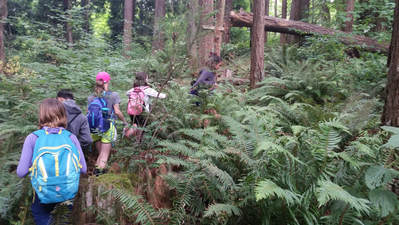
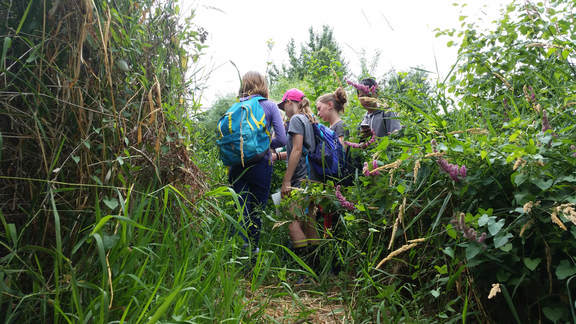
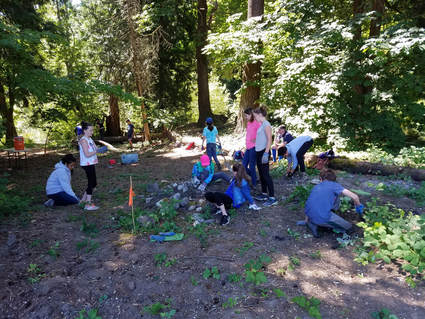
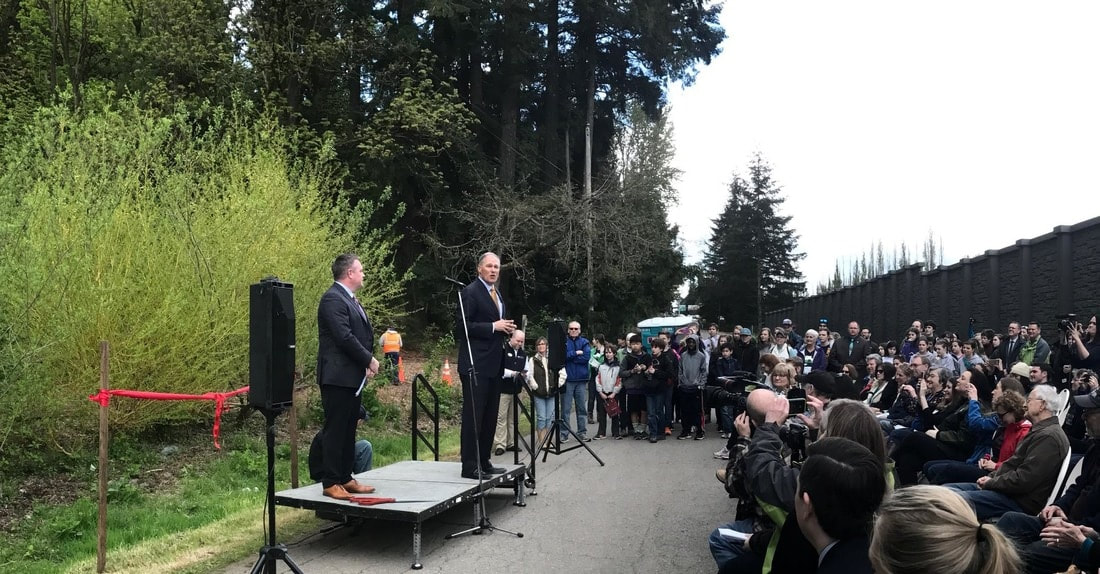
 RSS Feed
RSS Feed
